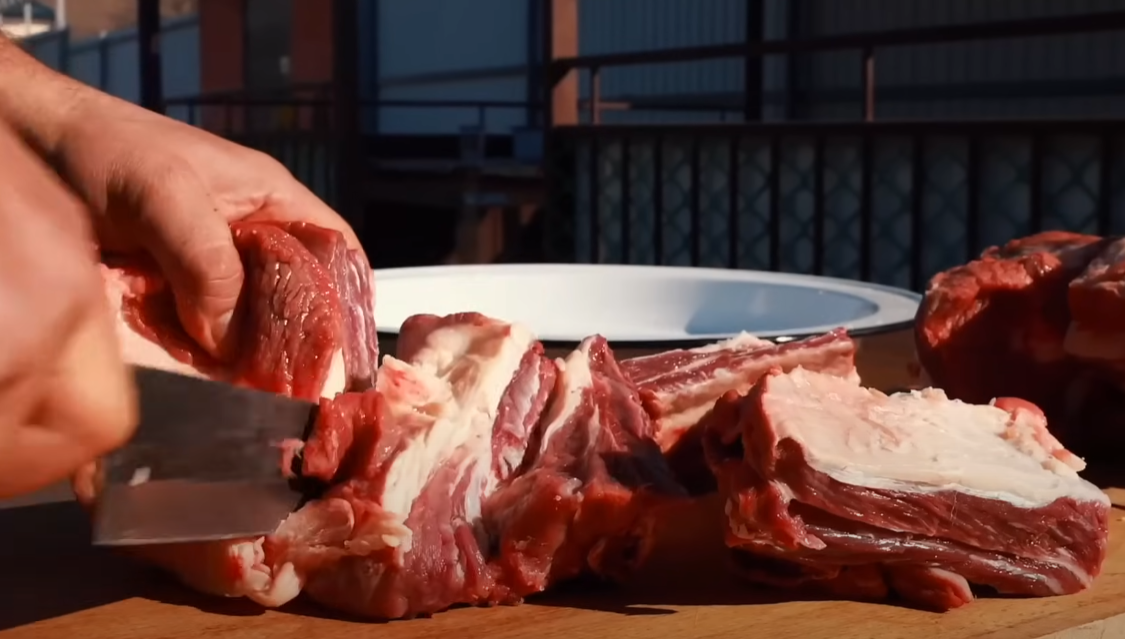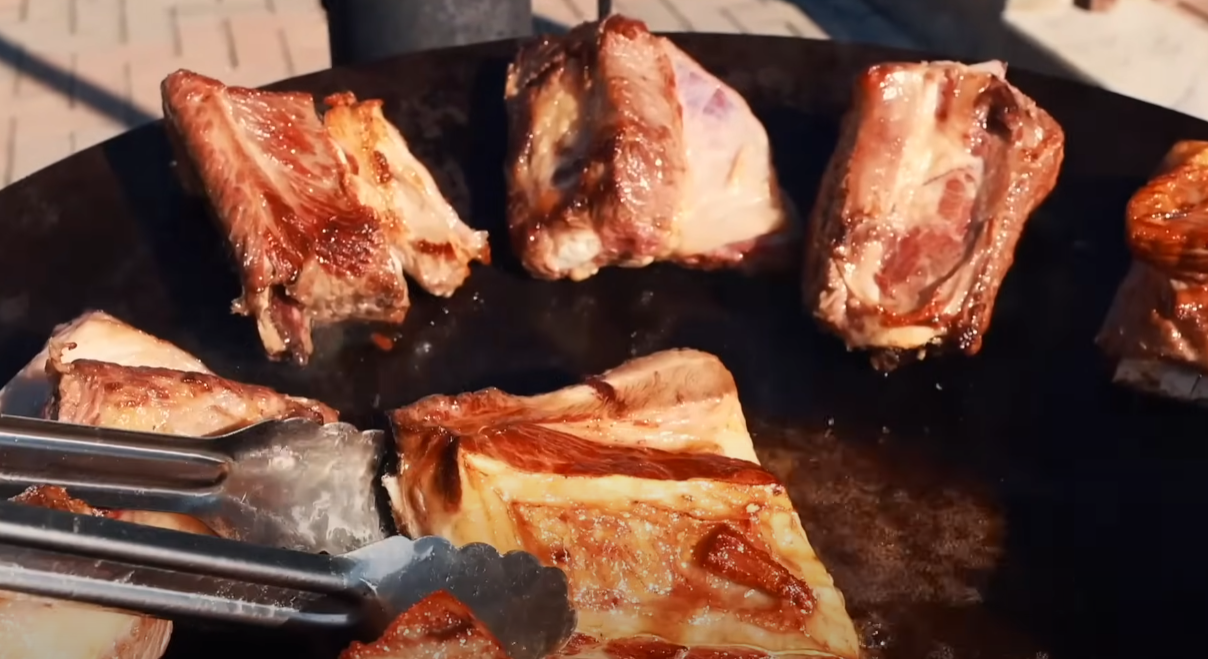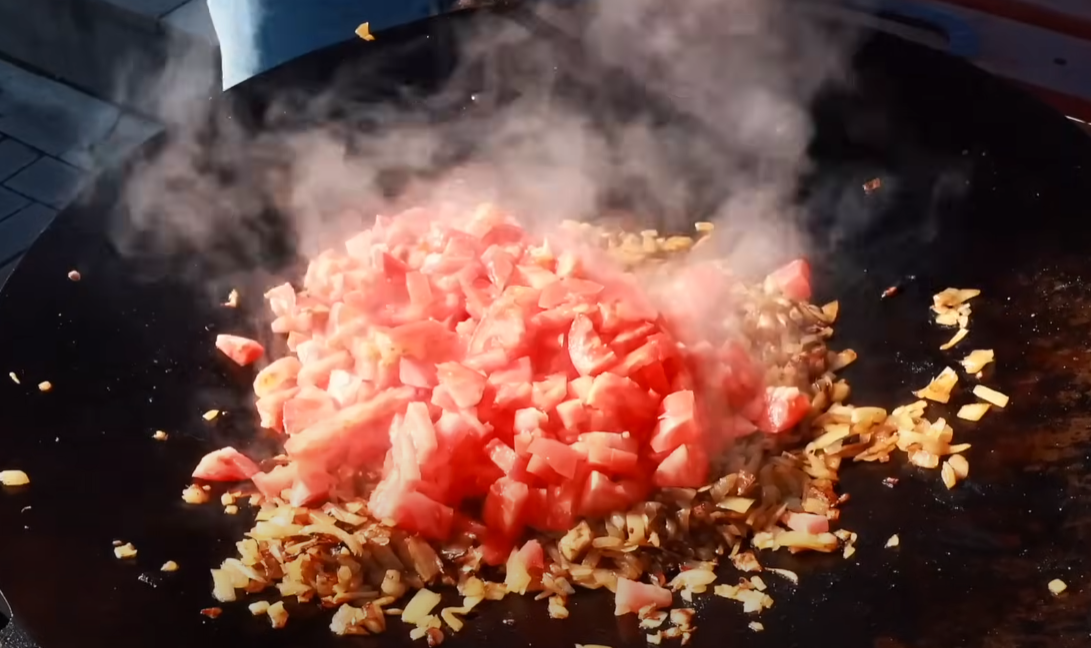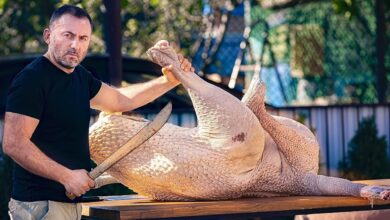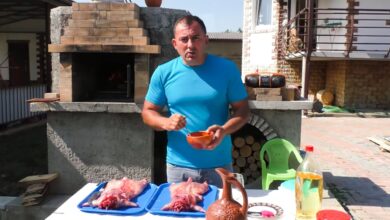Food
FRIED MEAT ROASTED IN THE OVEN – GEORY KAVKAZ
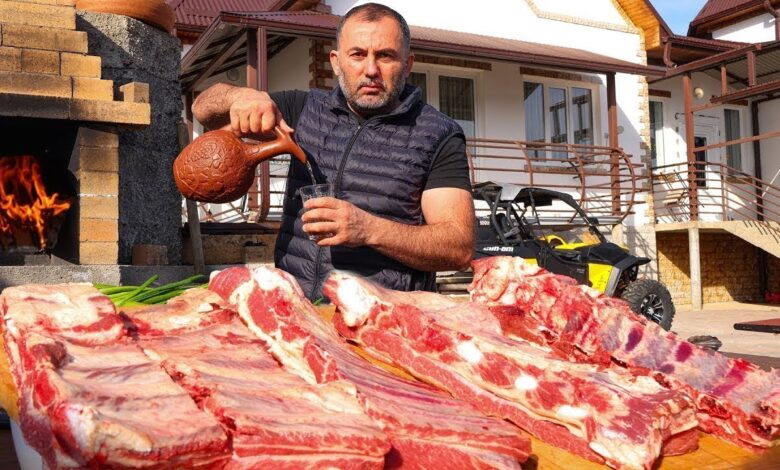
1. INGREDIENTS (Serves 6–8)
- 1.5–2 kg beef roast
(Recommended cuts: chuck, rump, or sirloin — boneless, well-marbled) - 3–4 tablespoons vegetable oil (sunflower preferred)
- 4 garlic cloves, smashed or finely chopped
- 2 medium onions, sliced into thick wedges
- 1 teaspoon ground paprika (optional – adds color and mild sweetness)
- 1 teaspoon dried herbs
(thyme, rosemary, or Georgian utskho suneli if available) - 1½ teaspoons coarse salt
- ½ teaspoon freshly ground black pepper
- Juice of ½ lemon (optional, for light acidity)
- 100–150 ml meat broth or water
- Optional: fresh parsley or dill for garnish
2. PREPARING & SEARING THE BEEF
- Pat the meat dry using paper towels. This ensures a crisp crust when seared.
- In a small bowl, mix together garlic, paprika, herbs, salt, pepper, and lemon juice.
- Rub this mixture all over the beef, coating it thoroughly. Let it sit at room temperature for 20–30 minutes (or marinate longer in the fridge).
- In a heavy-bottomed skillet (cast iron is ideal), heat oil over medium-high heat until hot and shimmering.
- Place the beef in the pan and sear each side for 2–3 minutes, rotating until all surfaces develop a rich brown crust.
- In the last minute, add the onion wedges into the same pan and toss them briefly in the meat juices to lightly caramelize.
3. OVEN ROASTING
- Preheat oven to 180 °C (350 °F).
- Transfer the seared beef and onions to a roasting pan. Pour in 100–150 ml of broth or water around the meat — this will generate steam and help keep the meat moist.
- Cover the roasting pan tightly with foil (or use a lid if available).
- Roast the meat for 1 hour to 1 hour 15 minutes, depending on thickness. Every 30 minutes, baste the meat with pan juices. This not only adds flavor but also promotes a shiny glaze.
- For the final 10–15 minutes, remove the foil and increase oven temperature to 200–220 °C (390–430 °F). This finishes the crust and deepens the color. The surface should turn golden-brown with light caramelization.
4. RESTING THE MEAT
This step is critical for juicy results.
- Remove the meat from the oven and transfer it to a wooden cutting board.
- Tent it loosely with foil and let it rest for 10–15 minutes. This pause allows the juices inside the meat to redistribute, avoiding dryness when slicing.
- During this time, you can reduce the remaining pan juices on the stovetop for a richer gravy—optional but highly recommended.
5. SLICING & SERVING
- After resting, carve the meat into thick or thin slices depending on your preference.
- For tenderness, always slice against the grain.
- Arrange the meat on a serving platter with roasted onions and any pan sauce.
- Garnish with fresh chopped parsley or dill for color and freshness.
- Serve hot with sides like:
- Georgian lavash or homemade bread
- Rustic roasted potatoes or mashed potatoes
- Pickled vegetables or fresh cucumbers and tomatoes
- Simple green salad with vinegar dressing
✅ NOTES
- No over-seasoning – Salt, garlic, and heat are enough to elevate good meat.
- Cast iron searing helps build a flavorful crust that carries through roasting.
- Roasting with onions adds sweetness and earthy aroma to the whole dish.
- Don’t skip resting – a rested roast is always juicier and more flavorful.
- Best enjoyed outdoors — but still delicious in your kitchen oven.


